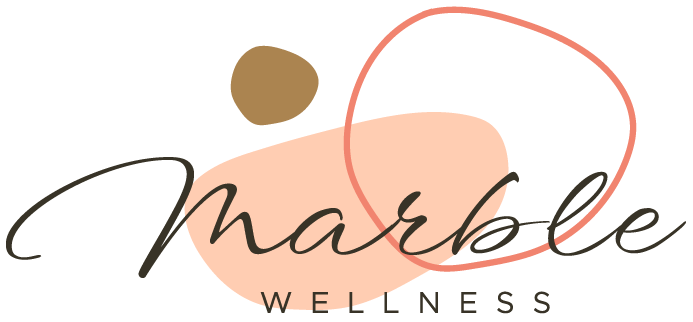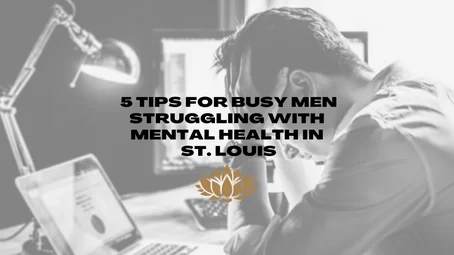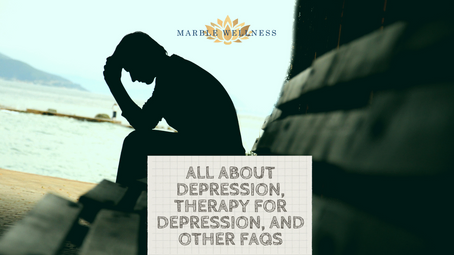Are you feeling the buzz about “Locking In” this fall?
If your feed is suddenly full of goal lists, daily routines, or friends swearing off distractions and “locking in” for the rest of 2025, you’re in good company. This viral movement, known as the “Great Lock In,” has become the rallying cry for thousands determined to end the year with intention, discipline, and change.
Yet underneath the hype, it’s easy to wonder:
Does locking in actually work? Is it healthy?
Can it bring the lasting transformation so many desperately seek, or does it risk fueling burnout and disappointment?
Let’s consider harnessing the best of new trends—while always prioritizing the deep, sustainable well-being at the heart of great therapy. In this comprehensive guide, we’ll unpack where the “Locking In” phenomenon comes from, why it resonates right now, and how you can use its momentum to build real change—without neglecting your mental health.
What Does “Locking In” Actually Mean?
In the simplest terms, “locking in” is about making a focused, short-term commitment to self-improvement. September to December has become the chosen window for many, a purposeful sprint to reach ambitious personal goals before the year ends.
It typically looks like:
- Creating clear daily routines
- Making habit lists and intention journals
- Prioritizing health, sleep, and nutrition
- Cutting out social media or limiting screen time
- Setting rules around relationships, work, and even spending
- Seeking accountability with friends or online communities
Unlike New Year’s resolutions, which often carry an all-or-nothing pressure, the lock-in trend encourages manageable, day-to-day action. It’s less about wholesale reinvention and more about using this season as a “reset”—to finish strong, and enter the new year with established momentum rather than guilt.
Why Is This Trend Exploding Now?
Social and cultural experts link “locking in” to a growing desire for control and clarity in a world that often feels noisy and overwhelming. As the economy, politics, and even weather patterns create stress, Gen Z and Millennials especially have turned to habits and routines as a way to take their power back.
There’s also nostalgia at play: Fall brings echoes of “back-to-school” self-improvement. For many, it’s a season that prompts reflection: Where am I now? What do I want to change before the year ends? Can I still make this a year to remember?
After “lazy girl summers” and other softer trends, “locking in” is a call for discipline and intent—a way to move from dreaming or scrolling into action and accountability.
The Many Faces of “Locking In”
Scroll through social media and you’ll spot the different flavors of this trend:
- Fitness-minded: Waking up at 5 a.m., walking five miles a day, meal prepping, taking on “75 Hard”-inspired challenges.
- Wellness-oriented: Decluttering your home, going to bed earlier, meditating daily, focusing on hydration and nutrition.
- Professional: Tackling big work goals, launching a side hustle, or building better boundaries around productivity.
- Community-focused: Creating mutual support accountability chats, joining challenges with friends, and “group lock-ins” for encouragement.
Everyone from college students to professionals, parents to wellness influencers, is finding ways to make the movement uniquely their own. The bottom line? The “lock-in” is flexible—its greatest strength, but also a possible weakness.
The Science of “Fresh Starts”—And Why Fall Works
Researchers call it the fresh start effect. That surge of momentum when a new season, month, or milestone calls us to re-evaluate our habits and start again.
Professor Katy Milkman of the Wharton School calls “The Great Lock In” a classic example:
“Every fresh start is socially constructed… [but] those fresh starts can come when people feel stuck and fed up with the current version of their lives. The worse the old chapter was, the more you needed the fresh start.”
September offers the psychological opportunity to break free from patterns that no longer serve us. For some, this means ambitious goals. For others, it’s the chance to slow down, recalibrate, and pursue quiet shifts.
The Risks: When Lock-In Leaves You Feeling Locked Out
But let’s be real: Motivation alone isn’t enough.
Every time a challenge trends upward, so can disappointment when reality sets in.
Here’s what we see as therapists:
- The momentum of September can fade by October, leaving lists unfinished and self-esteem shaken.
- Rigidity can lead to burnout, anxiety, or even self-criticism when “slip-ups” occur.
- All-or-nothing thinking (the “If I can’t do this perfectly, why bother?” spiral) can sabotage meaningful progress.
- The push for optimization sometimes misses the deeper, emotional needs—like self-acceptance, coping with uncertainty, or seeking joy beyond achievement.
What’s missing from the viral “lock-in” movement? Compassion, balance, and permission to be human.
A Mental Health Professional’s Take: Finding the Middle Ground
Our philosophy at Marble Wellness is simple but profound: true change gets built in partnership—with yourself, your therapist, and your community.
Here’s how to harness “locking in” in a way that aligns with mental well-being:
1. Reframe “Lock In” as “Tune In”
Instead of judging where you are, get curious. What do you most want to shift—not because social media says so, but because it matters to your happiness and calm?
Reflection prompt:
If you finished 2025 feeling proud, healthy, and fulfilled, what small steps would have made the difference for you?
2. Set Values-Based, Realistic Goals
The goals that stick are those anchored in personal values. Instead of “I have to run a marathon,” maybe it’s “I want the energy to enjoy my weekends with my kids,” or “I want to feel strong in my body.”
Choose 1–2 values-based goals, break them into weekly or daily intentions, and track progress with gentle encouragement, not rigid rules.
3. Embed Self-Compassion From Day One
You will miss a day—or even a week. That’s normal.
Practice talking to yourself how you would to a friend (“Everyone gets off track—it’s part of the journey”) and return to your intentions without shame.
4. Make Support Non-Negotiable
Accountability works—not just for goals, but for mental health. Tell a friend about your intentions, journal your progress, or meet with your therapist to celebrate wins and process setbacks.
5. Leave Space for Rest, Joy, and Flexibility
Some of the deepest improvements happen not in striving, but in allowing. Schedule downtime. Notice the small wins. Let this season of “locking in” be as much about reconnecting with yourself—and those you love—as about productivity.
Practical Ideas: A Marble Wellness “Lock In” Plan
Ready to “lock in” in a balanced, mindful way? Try these therapist-approved tips:
- Morning Routine:
Set a gentle alarm, avoid scrolling first thing, and list three intentions or gratitudes. - Move Your Body:
Find movement that feels good—even a daily walk counts. Don’t compare yourself to others. - Digital Detox:
Choose one platform to cut or limit for a week. See how your mood shifts. - Reflect Weekly:
Journal or talk with a friend about what’s working, what’s feeling hard, and where you need support. - Therapy Sessions:
Use your sessions to set goals, process feelings, and hold yourself accountable—with grace. - Celebrate Progress:
Each week, name one thing you followed through on. Progress over perfection.
When “Locking In” Feels Hard: Common Challenges and How to Cope
It’s not just the trend—life itself can be difficult at times. Here’s what to do when you’re struggling to stay “locked in”:
- You feel discouraged after a setback:
Remind yourself that falling off is normal. The goal is to return, not never to stumble. - Comparison drains your motivation:
Unfollow or mute accounts that prompt unhealthy comparisons. Recenter on your goals. - Mental health symptoms make progress difficult:
Reach out—to a therapist, support group, or trusted friend. You don’t have to do it alone. - You’re unsure what matters most:
Use therapy to explore your deeper values and longings. Sometimes the journey starts with the question, not the answer.
Why Therapy Matters—In Every Season
The “Great Lock In” trend might fade, but the longing for purpose, relief from anxiety, and the ability to thrive is timeless.
If you find yourself longing for more than quick fixes—if you’re craving real tools, transformative conversations, and the support to build a calmer and more fulfilling life—therapy meets you right where you are.
The Marble Wellness Difference
At Marble Wellness, therapy isn’t just about talking. It’s about real steps, action plans, and deep self-understanding. Our St. Louis-based therapists partner with you for both the “now”—immediate relief—and long-term skills you’ll rely on well beyond 2025.
From value-driven planning and gentle accountability, to processing the emotional roots of old habits—you’ll find support for the journey, and the destination.
Start Therapy in the St. Louis Area
The most powerful commitment isn’t just to a trend. It’s to yourself. This season, let “locking in” mean tuning into what you truly need. Reach for your goals, but always in the company of compassion, courage, and community. If you live in the St. Louis metro area and are ready to improve your mental health, our expert St. Louis therapists are here to help. Not only do we have a team of therapists in Ballwin, MO, but we have also recently expanded to serve the Lake St. Louis and Wentzville area! Reach out to our Client Care Coordinator today to discuss your therapy options, both in-person and via online therapy in Missouri.
Contact Us!
Learn About Our Group Offerings

Additional Counseling Services at Marble Wellness in St. Louis, MO
Marble Wellness Counseling services are designed to help set you on a path of living a more fulfilled, calm, and happy life. Our St. Louis area therapists have a variety of training backgrounds and areas of expertise. We have child and play therapists, therapists for teens, EMDR therapists, men’s mental health experts, couples therapists, and more! We specialize in anxiety, depression, grief, chronic illness, trauma & PTSD, life transitions, and maternal overwhelm. Our practice also specifically helps new moms with various postpartum concerns, moms in the thick of parenting, and moms with teens. We can also chat from wherever you are in the state with online therapy in Missouri. No matter where you are in your journey, we are here to help you thrive!



